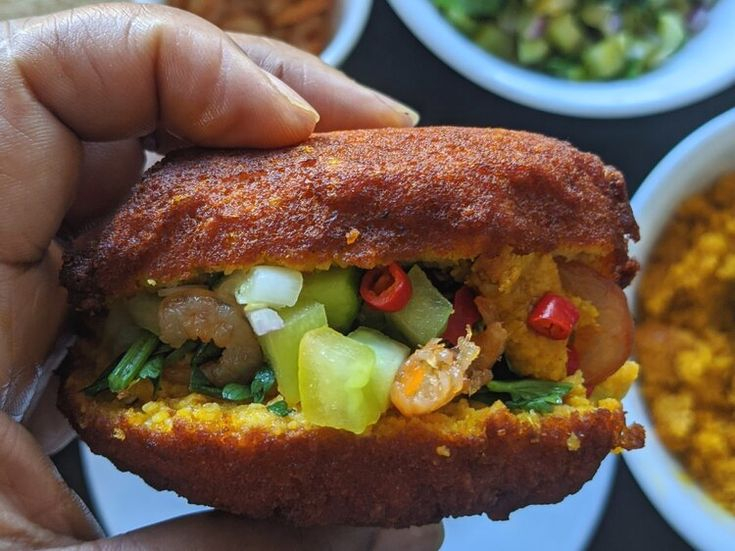Acarajé

Cowpeas or black-eyed peas from Yorubaland in Nigeria, Togo, and Benin are used to make the type of fritter known as acarajé. It is present in Brazilian, Caribbean, and West African cuisines. The northeastern Brazilian state of Bahia, particularly the city of Salvador, is where the dish is typically found. Agarajé is a religious tribute to the gods in the Candomblé faith. It is also known as one of the best street foods in Brazil.
Brazilian acarajé is created from raw, milled cowpeas that are seasoned with salt and chopped onions. The cowpeas are then formed into the shape of a giant scone and deep-fried in front of customers using a dendê pan that resembles a wok. The dish is presented in two sections and filled with hot pastes known as vatapá and caruru, which consist of ground cashews, ground shrimp, palm oil, and additional spices.
Green tomatoes and spicy peppers are classic accompaniments to a vegetarian dish. Abará, a variation of acarajé in which the contents are steamed rather than deep-fried, is another option.
The National Institute of Historic and Artistic Heritage designated acarajé as a national intangible historic heritage in 2004. The same legislation also acknowledged the contribution of baianas (women who sell acarajé) in the preparation and sale of acarajé. This fritter was officially recognized as a part of Rio de Janeiro's cultural heritage in October 2023.











